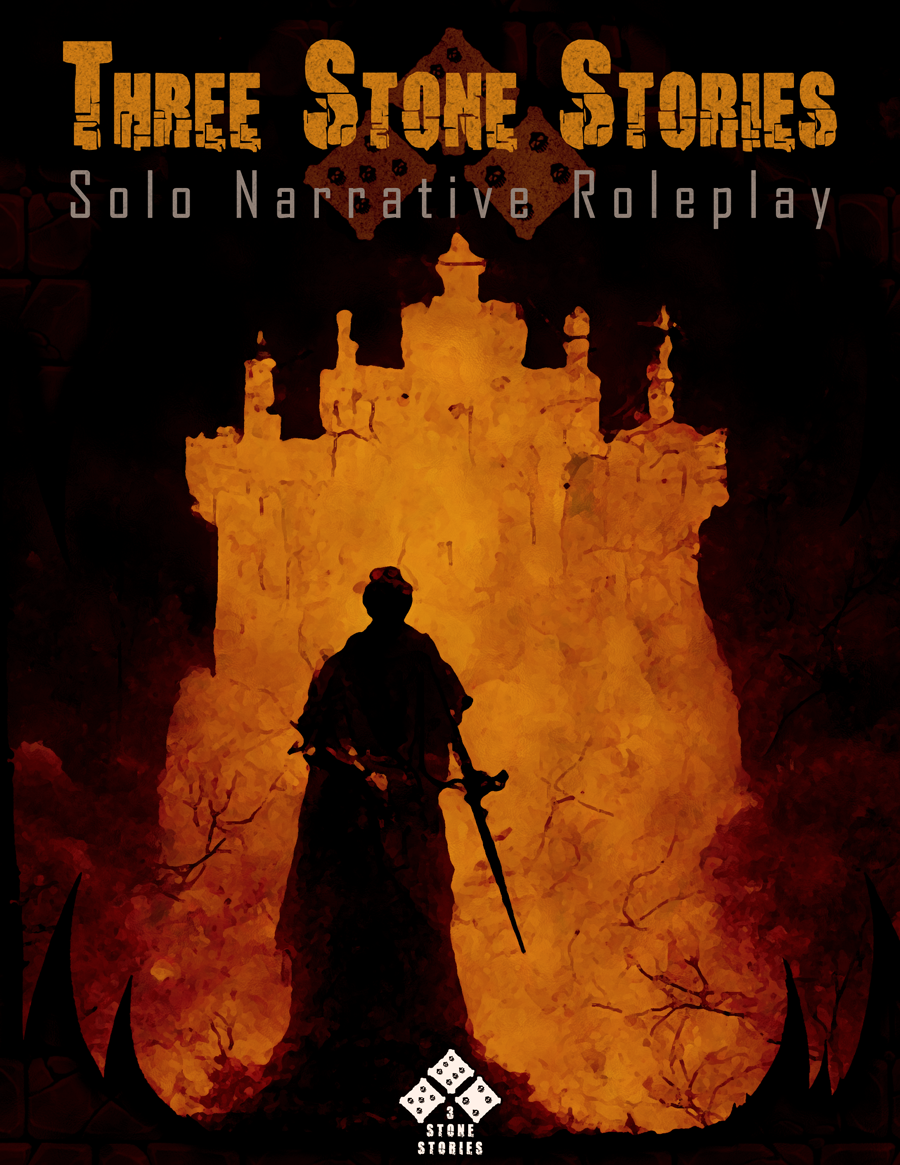Solo roleplaying is easy! And cheaper than swamp dirt.
But it doesn’t always feel easy. I’ve played a lot of PC games because it felt easier to load up a game than grab my dice. Which should be ridiculous, but it makes sense. Roleplaying takes space and, I thought, my own creative energy. Or, barring my own imagination, a book, tool, or app to provide the creative energy. I was wrong.
Solo roleplaying can be as creative and collaborative as regular roleplaying sessions, generates its own creative energy from the process, and you don’t need tools to make solo roleplaying evocative and fun.
My Solo Roleplaying Toolkit
When I’m on the go, my solo roleplaying kit includes a set of dice, a pencil with an eraser, and a character sheet. At home I add rulebooks and, if I want to get fancy, maps, tiles, and my growing collection of miniatures.
That’s it.
No apps. Zero books. No tables or funky story dice. And certainly no AI. AI has its place, but not at my table.
The Secret to Solo Roleplaying
My secret is nothing fancy. All I try to do is mimic what happens in a regular roleplay session around a table, or in kids’ games of imagination. My solo roleplaying trick looks like this: invent a character, put an obstacle in their path, then figure out how they overcome the obstacle.
Character + Obstacle + Resolution = Story
In a kid’s game, the progression looks something like this: “I’m Spider-Man. Look, it’s Doc Ock.” Then the kid runs around shooting imaginary webs at the eight-limbed evil scientist. Character. Obstacle. Resolution.
If it’s a movie? Meet Daniel LaRusso. Character. He gets beaten up by some punks. They’re the obstacle. To overcome the punks, Danny Boy learns karate and kicks one of them in the face. Resolution. That’s The Karate Kid (1984) on fast forward, but you can break the movie into parts using the same pattern. For example, Daniel (character) meets a row of unpolished cars (obstacle). Daniel overcomes the obstacle of polishing cars by polishing cars. Wax on. Wax off. Resolution reached.
What You Don’t Need for Solo Roleplaying
You don’t need to journal your adventure. I track important bits, like NPC and place names and events, but a few bullet points in a notebook are enough. Do it however you like, but the key is to stick to what we do best as roleplayers: use your imagination, the rules, and the dice, to tell a story. Don’t let accounting and note-taking get in the way of the process.
You also don’t need prompts. What is the greatest challenge for a nerdy kid from out of town? Making friends. A bunch of boys, who could have taken Daniel in and shown him around, instead became his enemies. The dungeon has a dragon at the end because a dragon is the most ferocious, challenging threat a party of adventurers could face. Let expectations inspire your story. If your hero is a pyromaniac, put them in charge of the village matches and fuel stores. If they’re a coward, send them into the ghost house.
Creating Interesting Solo Roleplaying Stories Is All About Character
Creating your character is not only about the character sheet. A solo character needs depth that includes their wants and needs, as well as their flaws. Frodo needed to keep the Ring away from Sauron and Gollum, but he heads straight for Sauron’s lands with Gollum in tow. Frodo’s need was under constant threat. Similarly, Sam was a friend who made up for Frodo’s flaw of wanting to go alone. Flaws and needs are your adventure hooks, and they’re recyclable.
You’ll find that this form of solo roleplaying relies heavily on your ability to craft stories. It’s a good thing. For one, you can learn from any form of storyteller. Novel writers, script writers, game designers, movie makers, and other GMs can all help you grow your solo roleplaying skills. Secondly, because of its inherent nature of building on the elements within the story (the flaws and needs), solo roleplaying creates its own energy. You don’t need random tables because the existing elements inspire your choices.
Why Didn’t I Think of That Before
There’s not much more to be said, really. The process works because it remains true to the core of roleplaying. You might tweak it for some systems, such as calculating Challenge Rating to keep fights manageable in Pathfinder or Dungeons & Dragons, but keep your game manageable. You know your limits and abilities better than most.
But there is one more ingredient to this secret sauce. You. Give our simple solo roleplaying tip a go by creating one obstacle based on a character’s flaw or needs. It can be any character, from novels, books, or games. Let us know what you came up with in the comments below. You’ll see how simple and fun solo roleplaying is.
Art Credits: IronThunder
Hi there, I’m Rodney.
Writer, Game Designer, Editor, Kitbasher, Skateboarder, and Ork ‘Ed Banga. But Nothing Without Christ!

































